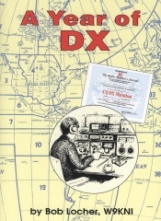
I spent Saturday filling out QSL cards, stuffing them in envelopes, and putting on $0.98 worth of postage for the USPS first class international air mail rate. To make life easier I ran both the return envelopes and main envelopes through the printer to get my address on. It would be easier to get some kind of mailing label sheets, which I think I will try to find when I get home for Christmas. Any way you slice it, filling out QSL cards and getting them in the mail takes a while. Keeping me entertained during the QSL card envelope stuffing session was the Insomniac Net through my IRLP node.
Sunday I woke up early and put up my Buddipole antenna, configuring it as a dipole for 20M. Exceptional DX catches for the day were:
UN7FU – Kazakhstan
WH0/WH7C – Northern Mariana Islands
FK8GX – New Caledonia Island
CW3TD – Timoteo Dominguez Island, Uruguay
I am continually surprised by my ability to work stations in South America. I’m not sure what path I am getting the propagation from. There is no one single time of day for my South American contacts – some are in the morning, others in the afternoon.

Today was the first day using my MicroHam USB III. The device is small, just larger than a pack of cards. The radio cable, which comes with the interface, is very well shielded. I used the USB III for both CW and PSK – the device worked well in both modes. Is the MicroHam USB III better than the West Mountain Radio USB PnP RIGBlaster? From a performance standpoint, I think it does a better. With PSK streams, I was able to detect and have QSOs with much weaker signals using the USB III. The fact that the USB III has its own soundcard is a big plus.

Almost done reading A Year of DX by Bob Locher, W9KNI. Bob details his year-long run in the CQ DX Marathon. The reader gets to sit side-by-side with Bob as he uses his Elecraft K3 and DX cluster alarm to work country after country. Bob demonstrates the importance of researching the various rare entities, determining when they might become active and how best to work them. The book is divided month by month, detailing the QSO with each new entity. Between the month chapters are useful chapters concerned with amplifiers, SSB phone techniques, and an amusing Walter Mitty-esque short story themed around DX contacts. I’m enjoying the book and recommend it (…potential stocking stuffer!).
